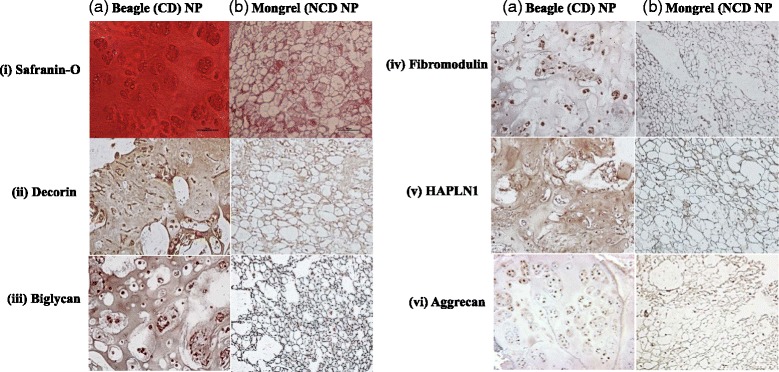Fig. 3.

Comparative immunohistochemical analysis of non-chondrodystrophic (NCD) and chondrodystrophic (CD) canine nucleus pulposus (NP) expression and distribution of decorin, biglycan, fibromodulin, hyaluronan and proteoglycan link protein 1 (HAPLN1), and aggrecan. For all extracellular matrix (ECM) proteins, the NCD canine intervertebral disc NP reveals a cobweb appearance, demonstrating intense staining for all proteins located in the areas tightly between the cells. Immunostaining with decorin reveals diffuse intercellular staining with negative immunostaining within the large, physaliferous-appearing notochordal cells. This presentation is in contrast to the abundant staining of these proteins in every CD NP sample. Decorin, biglycan, and HAPLN1 reveal intense staining within the ECM, with abundant clusters of small numbers of cells present within the NP. Although the ECM staining is less intense than that for the other three proteins, fibromodulin and aggrecan immunostaining is present. Furthermore, the CD NP stained for aggrecan reveals intense pericellular immunostaining diffusely throughout the ECM that is much less cellular than the NCD NP staining. Safranin-O staining shows quite intense ECM staining in the CD NP, whereas the NCD sample demonstrates intense intercellular staining without large, acellular ECM areas rich in proteoglycan staining. The overall appearance of the CD NP bears a strong resemblance to a fibrocartilaginous phenotype that is distinctly different from the NCD canine NP
